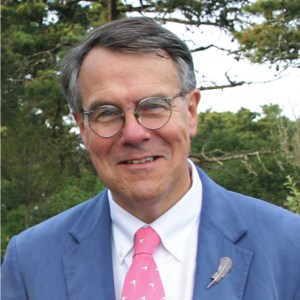
It’s natural that people tend to “take account” of their lives as they get older. They become interested in reviewing where they and their ancestors have been, and pay increased attention to matters of legacy, especially pertaining to their own families and life interests. It’s important to remember this when planning museum programs, and—no matter what our age—to consider the value of “taking account” in this way periodically.
As I write this I am sitting on a tiny island in Sweden northwest of Stockholm by about an hour. It is called “Ideas Island” and is the sometime home of the renowned management consultant Fredrik Haren. When he is not in residence, he makes this special perch available to those who have what he believes to be a “good idea” on which to reflect for a while away from the madding crowd. The rock-studded island is no bigger than three football fields, with oaks, pines, and birches growing around Fredrik’s cottage and cabins. It is a place of relaxation and perspective where, like Thoreau in Walden, one is astonished at how a whole day can pass without one practical thing being done.
My “good idea” pitched to Fredrik was, of course, to reflect on the promise inherent in aging creatively. As I think about this topic, I have three thoughts that might help (which is a record for me in one week):
1. The “Age Revolution” is new.
Our longer average age span is a very new phenomenon with which our culture has certainly not caught up. In the sixteenth century, it was a wonder that anyone survived childhood given the figures on infant mortality; and even by 1900, when the chances for children had improved, one’s odds of living to sixty were still low indeed. Many in the medical community today, however, believe that babies born in our time have a good chance of living until one-hundred. This is how fast things are changing!
Skip over related stories to continue reading article(Sub-thought: Yet, isn’t it fascinating that given our chances of much longer lives, we still look at “retirement” age as around sixty-five?
2. Older people are often irritated by words like “retirement.”
With the dawn of the “third age” phenomenon, many people see themselves as “engaging” deeper as they get older rather than retiring or retreating! Extended years of living enable us to move in directions oftentimes quite opposite to those determined by necessity in earlier life. I recall that the Trappist monk Thomas Merton made this same point from his own “retreat house” at Gethsemani Monastery in Kentucky. And—of course—Thoreau believed that he was doing anything but retreating when he “moved to the woods to live deliberately.”
With longer lives, people can reflect on and return to their first interests, in ways that not only benefit themselves but quite possibly the larger community. “Our life is frittered away by detail…Simplicity, simplicity, simplicity!” said Thoreau. Without some of the distractions of earlier life, our “third age” grants us more of an opportunity to seek that simplicity, if we choose to age creatively.
3. But why wait?
As an older active adult learner myself, I wonder why the opportunities I am talking about should only be available to us “third agers.” Why can’t working-age people, for example, negotiate periodic sabbaticals from their careers for professional development or research time? It would be a “win-win” for both employee and employer, with the latter benefitting from a refreshed worker. I rue the fact that a late brother-in-law of mine who loved teaching high school Latin and English was, over many years, worn down by the demands of living in an “up the down staircase” world. He often commented that a simple break now and again was all he needed to refresh and refuel. But, sadly, a heart attack preceded any change in educational policy that would have allowed for that.
Try advocating for your own sabbatical, and if the answer is “no,” use your vacation time wisely: take a stimulating extended weekend course, or perhaps go to the occasional Ideas Island of your own, even if it’s right at your own desk or sofa. Do it at any age. We do no favors to our workplace by avoiding vacations and being in constant contact. (Three key features of Ideas Island are: no TV, terrible radio reception, and absolutely no internet). Carved-out “white space” in our lives is so nourishing.
Speaking of the possibilities in white space, a little-known fact: When J.R.R. Tolkien conceived the idea for Hobbits, he was in the midst of correcting scores of exam papers at Oxford. One “blue book” (to use our term) contained only the name of the student, but once opened it revealed page after page of emptiness. The student had blanked out, and of course had failed the exam. However, on that hot summer day, in the blank space provided, the imaginative author doodled a little circle, surrounded by tufts of grass, and wrote under it, “In a hole in the ground lived a Hobbit…”
“Take account” of this as you plan your own career and your own creative aging programs.
Ad Summa!









Comments